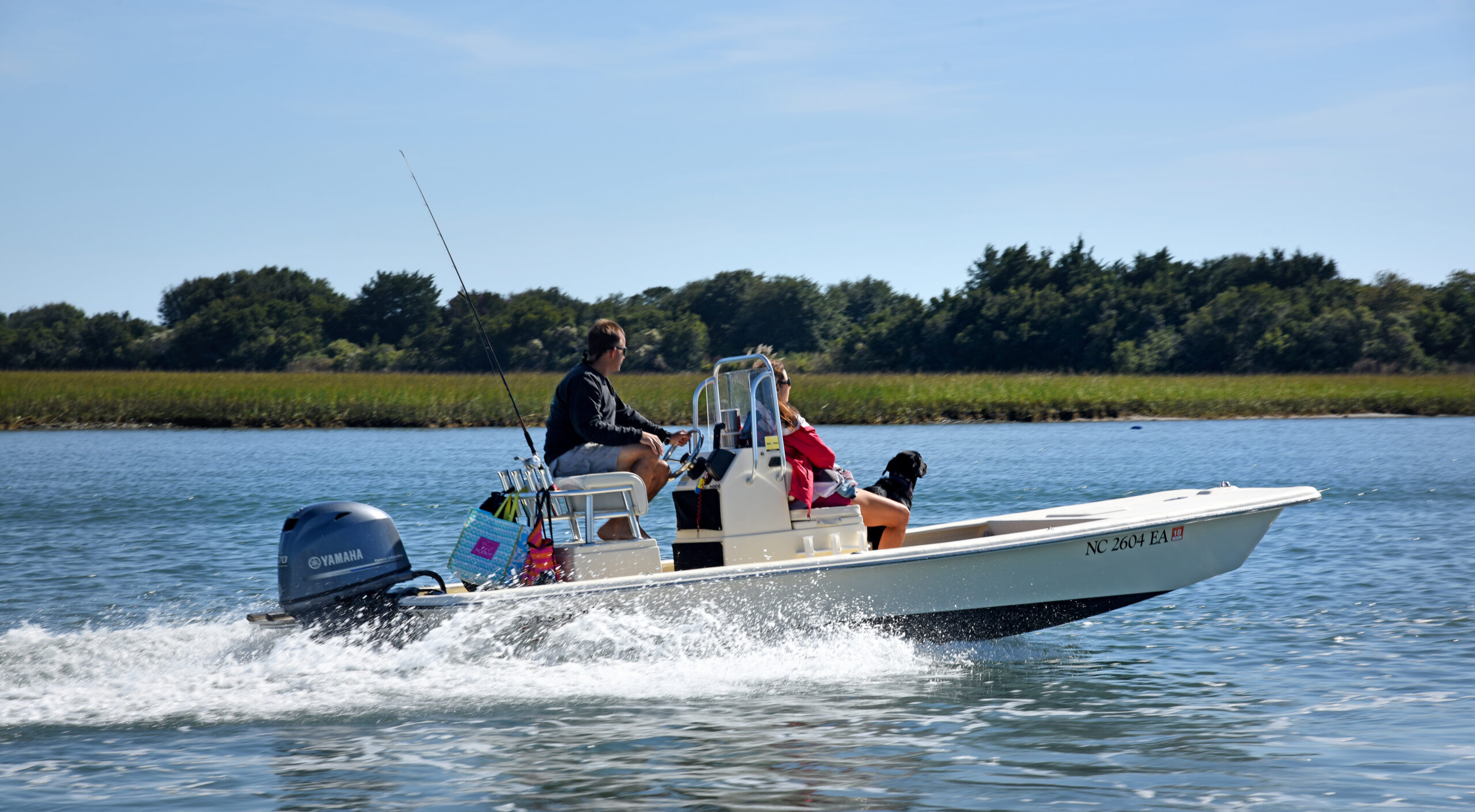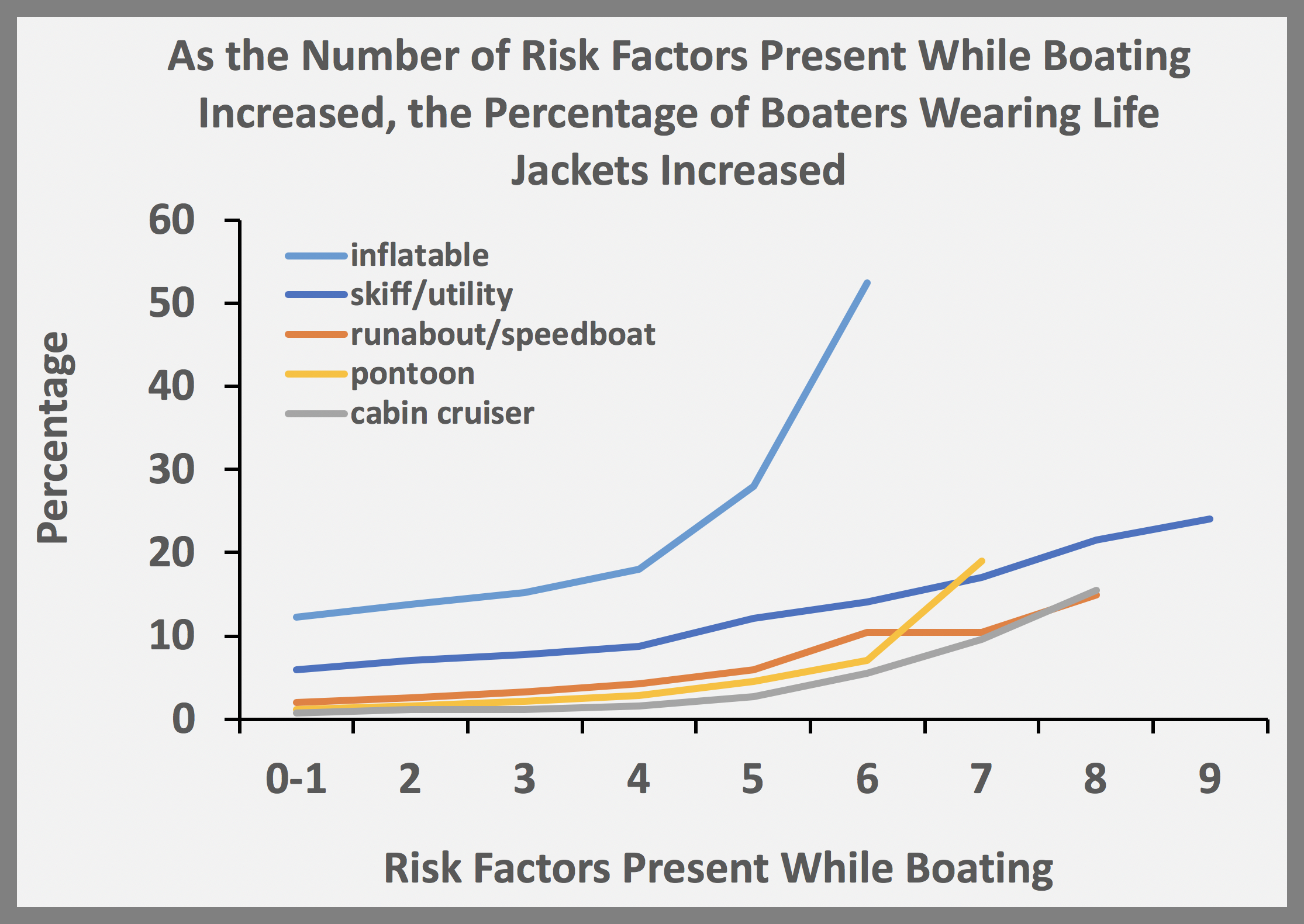What Causes Boaters to Wear Life Jackets?

In general, the riskier the conditions, the more likely boaters are to wear life jackets.
Within the span of a week this Fall, there have been two separate incidents of recreational fishing boats capsizing along the North Carolina coast. Of the six boaters involved, three were found alive, one drowned, and two remained missing after 48 hours. At least four of the men were not wearing life jackets, even though an inflatable life jacket was recovered at one scene.
Unfortunately, this yet another stark reminder that boating accidents can happen to anyone at any time.
Research Need
Annual statistics show that you are more likely to survive a boating accident if you are wearing a life jacket. In 2018, 35 people lost their lives on North Carolina waters. Twenty-nine of them were not wearing a life jacket.
While the percentage of adult powerboaters each year that wear life jackets is slowly increasing, that number remains low. About 7% of adult powerboaters (not including personal watercraft) wore life jackets in 2017.
Life jackets can be hot, uncomfortable and ill-fitting — and these excuses contribute to non-use by boaters.
That said, wouldn’t it be interesting to see what environmental conditions or situational factors cause more boaters to wear life jackets?
What Did They Study?
A research group has been documenting life jacket “wear rates” of recreational boaters in the United States from 1999 to 2017. To accomplish this, researchers stood on land at fixed locations throughout the country and observed and documented life-jacket use patterns among boaters on inland and coastal waters. For each observation, the team also recorded seven environmental conditions (like water temperature and wave height) and six situational conditions (like the size of boat, the activity, and whether a child was onboard).
To see whether these conditions or situations affected life jacket use, researchers further classified each of the 13 conditions as “risky” or “not-risky” based on expert boating safety criteria from the U.S. Coast Guard.

What Did They Find?
In general, the team observed that the rate of life jacket use increased as the number of risky conditions or situations increased. The trend held across all types of powerboats observed in the study.
Cold water temperatures, cold air temperatures, raining or stormy weather, strong current, children on board, and boat size were all significant predictors of life jacket usage for every type of powerboat.
So What?
This research suggests that most boaters understand the connection between wearing life jackets and preventing drowning, yet still too few are wearing them.
Anything Else?
When we are talking about life and death situations, sample size matters. From 1999 to 2017, this research group observed 272,354 boats and 766,576 boaters, including 13,675 boats carrying 37,577 boaters in 2017 alone.
Interesting Fact
There were 11,852,969 registered boats in the United States in 2018. North Carolina ranks ninth nationwide with 378,142.
Reading
Mangione, Thomas W., et al. 2017. 2017 Life Jacket Wear Rate Observation Study featuring National Wear Rate Data from 1999 to 2017. JSI Research & Training Institute, Inc. Boston, Massachusetts. https://www.uscgboating.org/statistics/national-life-jacket-wear-rate-study.php
Summary compiled by Scott Baker; Graph by Scott Baker, using study data from Table 3.2(c) on page 33 of final report; Lead photo by Roger Winstead.
The text from Hook, Line & Science is available to reprint and republish, but only in its entirety and with this attribution: Hook, Line & Science, courtesy of Scott Baker and Sara Mirabilio, North Carolina Sea Grant. HookLineScience.com



